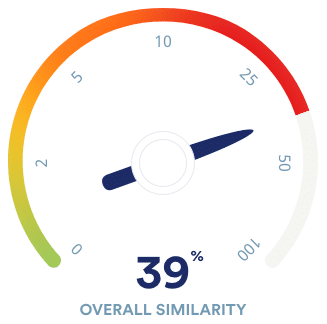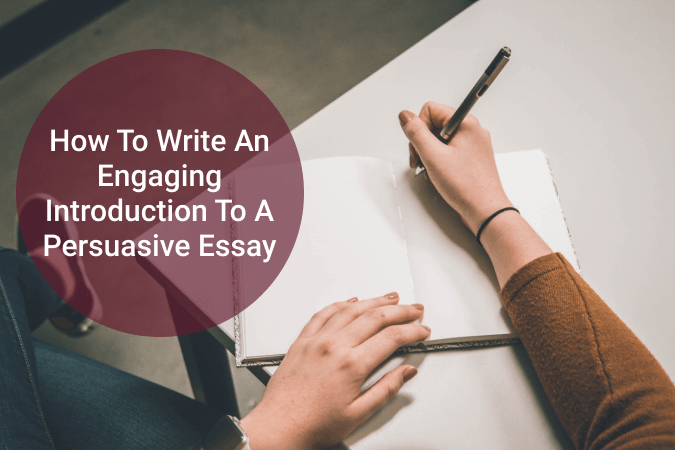
While college students in the U.S. are struggling with how to pay for college, there is another surprising demographic that’s affected by the pressure to pay for college: families and parents. In the face of tuition price tags that total more than $100,000 (as a low estimate), families must make difficult decisions about how to save for their children’s college education. Charting a feasible path to saving for college is further complicated by the FAFSA’s estimates for an “Expected Family Contribution”--an amount of money that is rarely feasible for most American families. Due to these challenging financial circumstances and cultural pressure to give one’s children the best possible chance of success in adulthood, many families are going into serious debt to pay for their children’s college education. The U.S. government should move toward bearing more of the financial burden of college education.
Here’s why this approach can work: as you write your paper, you’ll probably come up with new insights on your topic that you didn’t have right from the start. You can use these “light bulb” moments to reevaluate your intro and make revisions that keep it in line with your developing essay draft.
Now, let’s use the questions above to analyze the strengths and weaknesses of this sample intro paragraph.
Finally, this intro provides a thesis statement that conveys the writer’s point of view on the issue of financing college education. This writer believes that the U.S. government should do more to pay for students’ college educations.
Does the Intro Have a Good Hook?

Effectively introducing your essay’s topic, purpose, and getting your reader invested in your essay sounds like a lot to ask from one little paragraph, huh? In the next section, we’ll demystify the intro paragraph format by breaking it down into its core parts. When you learn how to approach each part of an intro, writing one won’t seem so scary!
You don't want to sit down to write your intro without a solid understanding of the different perspectives on your topic. Whether those are the perspectives of experts or the general public, these points of view will help you write your intro in a way that is intriguing and compelling for your audience of readers.
Once you’ve provided an attention-grabbing hook, you’ll want to give more context about your essay topic. Context refers to additional details that reveal the specific focus of your paper. So, whereas the hook provides a general introduction to your topic, context starts helping readers understand what exactly you’re going to be writing about
If trying to write an intro paragraph makes you feel like a Muggle trying to do magic, trust us: you aren’t alone. But there are some tips and tricks that can make the process easier--and that’s where we come in.

If included, the overview should be concise, direct, and written in the present tense.
A research question can be framed either directly or indirectly.
The five steps in this article will help you put together an effective introduction for either type of research paper.
The research question is the question you want to answer in an empirical research paper.
Empirical paper: Research question and hypothesis
Now you’ll get into the specifics of what you intend to find out or express in your research paper.
The rise of social media has been accompanied by a sharp increase in the prevalence of body image issues among women and girls. This correlation has received significant academic attention: Various empirical studies have been conducted into Facebook usage among adolescent girls (Tiggermann & Slater, 2013
For example, the following hypothesis might respond to the research question above:
Present your research question clearly and directly, with a minimum of discussion at this point. The rest of the paper will be taken up with discussing and investigating this question

Now you’ll get into the specifics of what you intend to find out or express in your research paper.
The rise of social media has been accompanied by a sharp increase in the prevalence of body image issues among women and girls. This correlation has received significant academic attention: Various empirical studies have been conducted into Facebook usage among adolescent girls (Tiggermann & Slater, 2013
Don’t feel that you have to write the introduction first. The introduction is often one of the last parts of the research paper you’ll write, along with the conclusion.
- Present your topic and get the reader interested
- Provide background or summarize existing research
- Position your own approach
- Detail your specific research problem
- Give an overview of the paper’s structure
Empirical paper: Relate to the literature
The first job of the introduction is to tell the reader what your topic is and why it’s interesting or important. This is generally accomplished with a strong opening hook.
Full examples of research paper introductions are shown in the tabs below: one for an argumentative paper, the other for an empirical paper.
The research question is the question you want to answer in an empirical research paper.

You can use the checklist below to make sure your introduction does everything it’s supposed to.
A thesis statement is a sentence that sums up the central point of your paper or essay. Everything else you write should relate to this key idea.
Without a clear thesis, an essay can end up rambling and unfocused, leaving your reader unsure of exactly what you want to say.
- Catch your reader’s attention.
- Give background on your topic.
- Present your thesis—the central point of your essay.
Step 5: Check and revise
Example: Signposting This essay begins by discussing the situation of blind people in nineteenth-century Europe. It then describes the invention of Braille and the gradual process of its acceptance within blind education. Subsequently, it explores the wide-ranging effects of this invention on blind people’s social and cultural lives.
The “hook” is the first sentence of your essay introduction. It should lead the reader into your essay, giving a sense of why it’s interesting.
You have a strong introduction - now make sure the rest of your essay is just as good.
How do you write an introduction for a research paper?
It is essential that you make the beginning of your research paper interesting and engage with your readers from the first line. This will make sure that people continue to read and learn about what you have found out. You should also state a hypothesis and the way you think your work will turn out in conclusion. You must always include an introduction to your paper.
"A strong introduction to a research paper should probably be written last. The introduction needs to include: 1) what the topic is focused on, 2) how the research was conducted(method), 3) what the findings are (generally), 4) and how the paper contributes to the overall field. These items are often unanswerable until the paper is complete. An introduction should also absolutely have a few sentences that specifically detail what they will read in the upcoming pages. Research Papers are NOT like fiction writing where you might want to sustain the mystery—instead,you want to show them the payoff up front. If the reader gets to the end of the introduction and does not know what to expect in the rest of the paper, you may have missed the mark."
Dr. Elizabeth M. Minei, PhD, Associate Professor at Baruch College, Founder and C.E.O. of EMinei Consulting
When all the important work is done, it’s time for the outline of the research paper’s structure. Not every mentor requires the structure overview in the introduction, but sometimes students are asked to stress on few aspects of their future research. This is not about the detailed depiction of every part of your work. The outline is a short paragraph, which consists of 3 or 4 sentences and represents your plan for the entire paper. You can also look for some essay introduction examples to grab some ideas.
Dr. Elizabeth M. Minei
_1568118756-min_1614615284.jpg)
As you see, writing research papers introduction is not that challenging if you follow the guide. But sometimes even the smartest students fail in choosing a competitive topic and building a solid thesis. Even if you consider your topic important, it can seem questionable for your professor. How to write an introduction for a research paper and make it flawless?
You want to capture your reader’s attention right from the beginning. If you are not sure how to do that effectively, think about including a quotation that captures the heart of the topic. This will be particularly true if your essay is for social subjects, such as English, History, and humanities. It is going to help create a picture in the reader’s head, and they will remember this when they are reading your work. Depending on the subject of your paper, it could also include a striking statistic.
So, what should you include in your introduction? We will give you a list below so that you can prepare a research paper introduction outline and follow it when you are writing.
It is recommended to start with general info and then narrowing down to specific aspects. Try not to deepen into a state of things in the beginning, but explain your view on the topic. If you are going to use some difficult expressions in the central part of an essay, make them clear to any reader and point out their connection with your topic.

You can use various quotes, anecdotes, interesting facts, or controversial sayings in order to start your essay effectively. Use any available persuasive tools to support your point of view. Do not hesitate to write down your unparalleled ideas even if they look too provocative. Follow the writing requirements when completing an essay. Be very attentive to details and make sure to check an essay a few times before submitting it.
Be ready to spend your time checking your completed paper a few times. You must submit an original and flawless written piece. Pay your attention to the opening paragraph since you need to gather your readers’ attention and make them read your entire essay. Assure engaging and interesting beginning of your article. This is the best way to intrigue and to motivate your audience.
An introduction is one of the central elements of an essay. With a strong and appealing opening part, you can assure your essay’s success. A strong intro is aimed at gathering the reader’s attention and making people read an entire essay. It can be problematic to perform an excellent opening part. Still, there are a few useful writing tips you can use.
An essay outline is an important element of every essay paper. It allows you to bring together the entire paper’s elements properly and assuring a requested essay format. An essay outline can be used as a writing plan. It allows you to deal with every part of an essay accurately. Moreover, an essay outline makes it easier to come up with every separate argument, its supporting evidence, important facts, concepts, and explanations.
How to Write an Engaging Introduction to a Persuasive Essay
There is no need to write down all the arguments and supporting evidence into this part. You will write them down into the main body part. State a brief and informative thesis statement. Always check your paper before submitting it to your tutor or college professor.
First, use an attention-grabbing hook sentence. Therefore, provide readers with a hook phrase to gain their full attention. It can be a funny fact, anecdote, previously unknown information, quote, or a certain definition. It must be something to keep readers hooked on your paper. Moreover, add background information into an opening part. The last sentence is always a description and explanation of a thesis statement.
There are many useful tips and guides on how to accomplish an academic task without a glitch. In fact, your writing talents can be very helpful. Be ready to use your analytical abilities as well since the persuasive essay is the type of research paper. This piece of writing requires a profound analysis of a subject. You need to reveal your point of view based on strong arguments and supporting evidence. Further, you must persuade your readers to share your opinion.
A persuasive essay has a standard essay structure. Often, writers prefer a 5-paragraph essay format the most. In general, an essay requires a strong and attention-grabbing introduction, informative main body parts, and a short and snappy conclusion.

